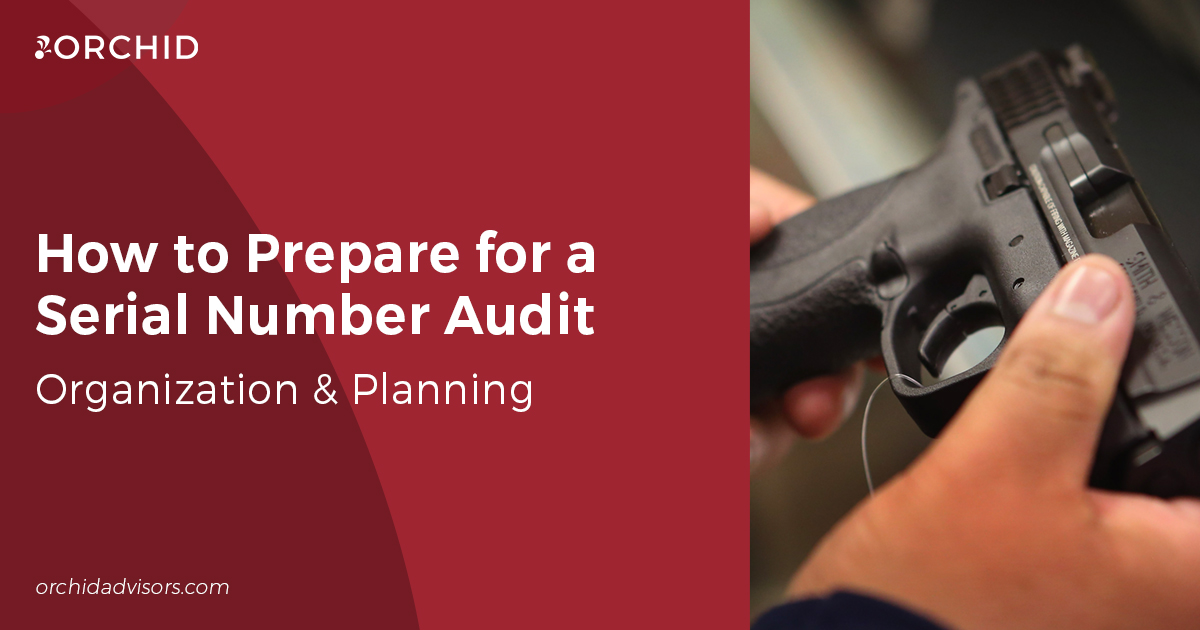For any business that manufactures, distributes or sells physical products, performing regular inventory audits is critical to maintaining balanced finances and operations. For FFLs, there’s also the added responsibility of maintaining ATF compliance.
All federal firearms licensees are required to maintain an acquisition and disposition (A&D) bound book, as well as report any firearm lost or stolen within 48 hours of discovery of the theft/loss. Failing to maintain accurate and timely records, or to report a firearm theft/loss, are substantial ATF violations that could cost an FFL its license.
To help you prevent such violations, save time, and prepare for your next inventory, below are steps and tips for how to prepare for compliant serial number audit.
What is a Serial Number Audit?
In the context of firearms, a serial number audit is a systematic cross-examination of a licensee’s “open disposition” records and physical inventory to verify the accuracy of the A&D bound book. The goal is to identify any errors or discrepancies in the bound book records, and to ensure that all serialized inventory is properly accounted for.
Serial Number Audit Preparation
Whether your firearms business has ten, 10,000, or 100,000 open dispositions, how you prepare for a serial number audit will ultimately determine your team’s accuracy efficiency. Setting your FFL up for success begins with organization and planning.
Build a Team
Firearms won’t audit themselves, so it’s important to plan who will conduct the inventory. Whether led by an appointed Responsible Person, owner-operator, or manager role, establishing an audit leader is critical to effectively communicating expectations, responsibilities and accountability. The leader will also serve as the point person for any issues that may arise during the audit.
At least one additional person is recommended, though the size and demands of your operation will dictate how large or small your team is and whether additional sub-team leaders may be needed. Whoever or however many people participate in the audit, it’s important everyone is sufficiently trained.
Appropriate audit training includes understanding the following:
- How to safely handle firearms
- How to recognize firearm brands and models
- How to locate firearm information (i.e., model, caliber, serial number)
- How the audit system works (i.e., paper vs. software)
- How the audit hardware works (i.e., barcode scanners, computers)
- How the audit will be coordinated and run
Create Locations
Once your audit team is built, it’s time to turn your focus to your facility. Working out of a garage with a single gun safe is one thing but operating in a massive warehouse with multiple storage rooms – or even an FFL with multiple locations – is a whole other ballgame. But no matter how large your operation is, breaking a serial number audit up into smaller, bite-sized chunks will make it easier to consume.
Start by identifying locations based on rooms, walls, safes, or shelving units. Then, break those locations down into smaller sub-locations, such as front and back walls or individual shelves. Continue breaking up locations and sub-locations until you’re left with 50-100 firearms per sub-location. Not only does this method help inventories appear less overwhelming, but it also creates hard start and stop points in case something happens during the audit that requires you to reference back to a specific serial number. Rather than search for one gun amongst thousands, you only need to review the last 50-100.
Manage Operations
Because a serial number audit may take multiple hours or even days, it’s important to consider how your operations may impact inventory. The last thing you want is to start an audit only to realize the guns or parts you’re looking for are being packaged, shipped, or no longer in the facility.
If your FFL can afford to pause or stop operations during your audit, do so. However, that’s not always possible. If operations must continue, create additional locations for production, shipping/receiving, and other departments to track the movement of serial numbers so nothing is missed.
Often missed during inventories are unprocessed scrap, engineering test guns, firearms on temporary assignment, and those sent to media, photographers, and outside vendors. Not all guns have to be in your facility necessarily, but they should be accounted for.
Practice and Test
Not only does practice makes perfect, but you need perfection when your operating license is on the line. Before you conduct your real audit, practice how you and your team will conduct the inventory and test both hardware and software used, if any. This may include training employees, learning new software, setting up locations and sub-locations, and testing WiFi or Bluetooth connectivity between scanners, computers, and your facility.
Serial number audits are already time-consuming so the last thing you want is to have to redo one because of miscommunication, miscounting, or technical issues that lead to excessive time spent searching for serial numbers that are believed to exist but were not “found,” or inventory that exists being mistakenly marked lost.
Compliance Considerations
Between 2016-2020, knowingly making false entries or failing to properly maintain A&D record was the 10th most cited violation during FFL compliance inspections. However, by just doing regular serial number audits and timely reporting firearm theft/loss, you can prevent financial loss, compliance risk, and revocation.
Using compliance software, like Orchid eBound™ or Orchid’s Serial Number Inventory Tool (SNIT), can also eliminate ATF violations. Contact us today to learn how Orchid’s industry-leading software can help your FFL conduct more efficient and more compliant serial number audits and to schedule a free demo.
We also encourage you to watch our free webinar on serial number audit best practices. Register now and watch our recorded presentation, featuring a demo of Orchid SNIT, on-demand.








0 Comments